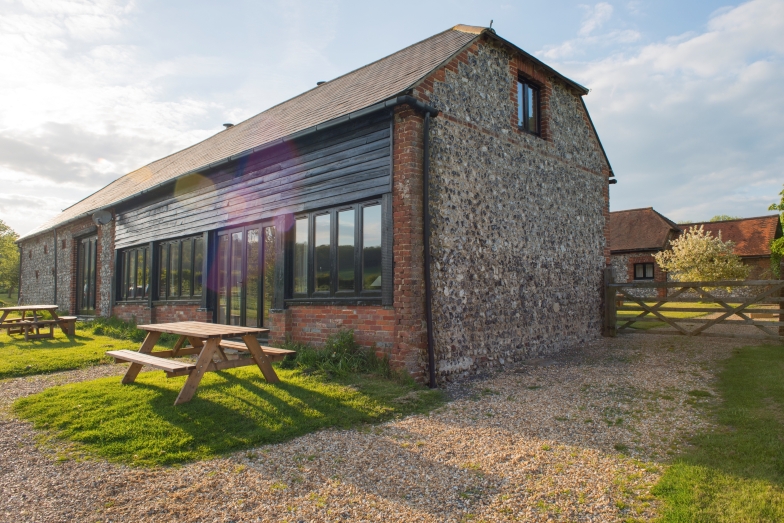Checked for accuracy on February 12, 2025.
Accessory Dwelling Units (ADU), previously known as in-law suites or accessory units, may be popping up more in the loans you’re working on. They may add value to a homeowner’s property and provide more housing opportunities for family members to live – around 61% of homeowners have cited multigenerational housing as their primary motivation for constructing an ADU. Plus, they typically have a smaller environmental footprint! But if you don’t work with loans that have ADUs often, you may need to familiarize yourself with their features and how they can impact your borrowers’ loans.
Our very own Amy Hopkins, Regional Underwriter, explains more about ADUs, how they are classified, and what you’ll want to consider for these types of loans.
Getting to Know ADUs
An ADU is typically a smaller, individual unit used for residential dwelling on the same lot as a single-family home. They could have been added to, created within, or detached from a one-unit primary dwelling, but must provide living conditions (sleeping, cooking, bathroom facilities) for the occupant. However, they are not considered an ADU if they can only be accessed through the primary dwelling. Not only can ADUs add value to a home that is potentially larger than the cost of building them, but they also provide homeowners with more flexibility than ever during a time of rising interest rates and difficult market conditions.
Properties with ADUs are eligible for a Purchase, Rate Term or No Cash Out Refinance transactions. Additionally, borrowers can pursue a renovation loan on an ADU or add an ADU. Under certain circumstances, a borrower can potentially use rental income from an ADU, which is a huge bonus today due to high interest rates.
Examples of ADUs could include those over a garage, in a basement, an addition to the primary property, detached from the primary residence entirely, or even a manufactured home when the primary residence is a one-unit stick or modular property. Whatever design a borrower chooses, this unit type provides borrowers with more opportunities in a challenging mortgage marketplace. But what other characteristics should you know about when underwriting these loans?
ADU Characteristics to Help Determine Unit Eligibility
When you’re evaluating the appraisal and determining whether your borrower’s property is an ADU, you should look for the following characteristics to help determine the unit’s eligibility:
- Should be smaller in size than the primary dwelling
- Only one ADU is permitted on the parcel of the primary one-unit dwelling
- ADUs are not permitted with a 2-4 unit dwelling
- Means of ingress/egress, i.e.:
- The ADU is not required to include access to the primary dwelling. However, it would not be considered an ADU if it can only be accessed through the primary dwelling or the ADU area is open with no expectation of privacy
Diving in deeper, they also need to have separate living features from the primary dwelling to qualify. These features include:
- Kitchen with cabinets, countertop, sink with running water, stove or stove hookup (hotplates, microwaves or toaster ovens are not acceptable substitutes)
- Sleeping area
- Bathing area
- Bathroom facilities
For more information, refer to Fannie Mae’s Selling Guide here or learn more about ADUs on Freddie Mac’s website here.
With this living type, an evident benefit of ADUs is that they provide separate living space to parents, adult children or family members. Every borrower’s situation is different and homeowners are turning to solutions like these to meet their needs in an ever-evolving mortgage marketplace. Knowing how to navigate the guidelines for ADUs puts you ahead and keeps you ready for when you might face these in your loan/appraisal reviews.
Additional ADU Considerations
It’s important to stay in the know and understand the details when you’re working on a loan with this property type. So, here are key points of interest to keep in mind:
- An independent second kitchen is not an ADU
- Removal of a stove does not change an ADU classification
- Be mindful to look for characteristics that could determine your ADU is actually a 2-4 unit property. Some examples of these could be: 2 separate utility meters, a unique postal address, whether the unit can be legally rented, etc.
- Must comply with zoning and land use requirements (see the section below for more information on zoning)
- Must be on the same parcel as the primary dwelling
- Requires comparable sales with similar ADUs
- For Fannie Mae HomeReady® loans only: rental income generated from an ADU can be considered as rental income in accordance with standard rental income guidelines, with all appropriate appraisal forms and documentation. Refer to the Fannie Mae Selling Guide for specific details on these guidelines.
- For Freddie Mac standard program guidelines: Rental income that is documented with a lease must not exceed 75% of the lease amount, and qualifying rental income cannot exceed 30% of total income used to qualify. Refer to the Freddie Mac Selling Guide (Section 5306.1(g)) for ADU rental income guidance and for any other program specific guidelines.
This list is not exhaustive – for more specifics on how to handle the appraisal portion of this loan type, we’ve got you covered below.
Navigating the Appraisal Review for Properties with ADUs
Working with properties that have ADUs requires a lot of detail-oriented work and a good pulse on the guidelines related to ADUs. Navigating the appraisal review portion of the underwriting process is no different.
To help you remember some appraisal features to look out for, refer to the following list:
- Zoning is especially important; some ADUs may be grandfathered and classified as legal nonconforming, which your appraisal must confirm. Thus, it would be considered legal if allowed under the current zoning requirements for the primary dwelling.
- If the zoning confirms that an ADU is not allowed under any circumstance, it would be eligible under the following:
- Confirms that the existence will not jeopardize any future property insurance claim that might need to be filed for the property
- Illegal use conforms to the subject neighborhood and to the market
- Property is appraised based on its current use
- Appraisal states the improvements represent a use that does not comply with zoning (ex: illegal use)
- Appraisal provides support that the improvements are typical for the market through analysis of at least 2 comparable sales with the same non-compliant zoning use
Please also note: When you’re reviewing the Improvements section of the appraisal report and calculating the living area, the ADU living area should not be included with the Gross Living Area of the primary dwelling. Instead, it should be reported and adjusted separately in the grid to comparable sales with similar ADU characteristics.
If you have any questions about how to handle this loan type, feel free to contact our Regional Underwriting Team or contact your Sales Representative today!
More Ways We Can Help
ADUs may be a great way for your borrowers to help themselves navigate a challenging mortgage market and find a more affordable option to house family members, get rental income, etc. When working on loans with this property type, your Enact MI team has got you covered. Our Regional Underwriting Team is available to assist you Monday-Friday 8am to 8pm ET at 800-444-5664 option 2.
Be sure to make the most of your MI experience, too. Please explore our many underwriting resources and underwriting tips for more information. Because going the extra mile comes easy for us, we also offer a comprehensive suite of training resources to help boost your industry experience.








